It's time for me to take a step outside my comfort zone again. I prattle on about biochemistry all of the time and I am sure you are used to reading my blogs about enzymes and DNA, proteins and bacteria. Well today let's take a walk on the wild side, and talk about chameleons. More specifically chameleons that can glow under a black light.
The reason we do this is purely because I was reading an article recently published in Nature: Scientific Reports titled "Widespread bone-based fluorescence in chameleons." This article originally caught my eye from its title alone as I said to myself "What? Fluorescent Bones? In a land animal?" So on that small mind blowing of mine, lets dive in and learn a bit about what bones fluoresce in a chameleon and think about why this might be useful for the animal.
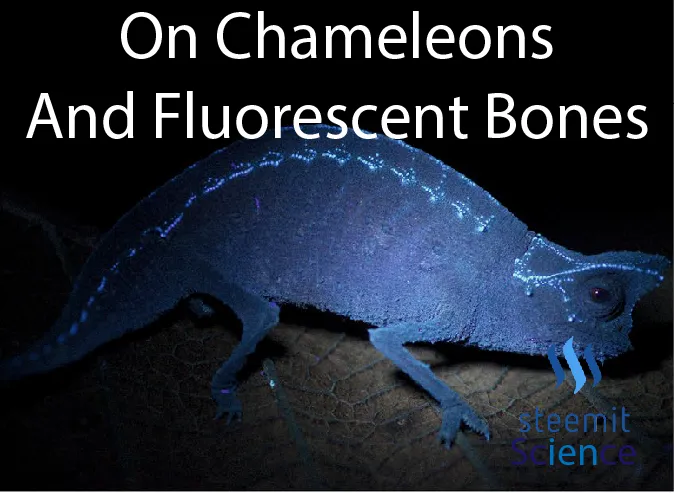
Fluorescent Creatures
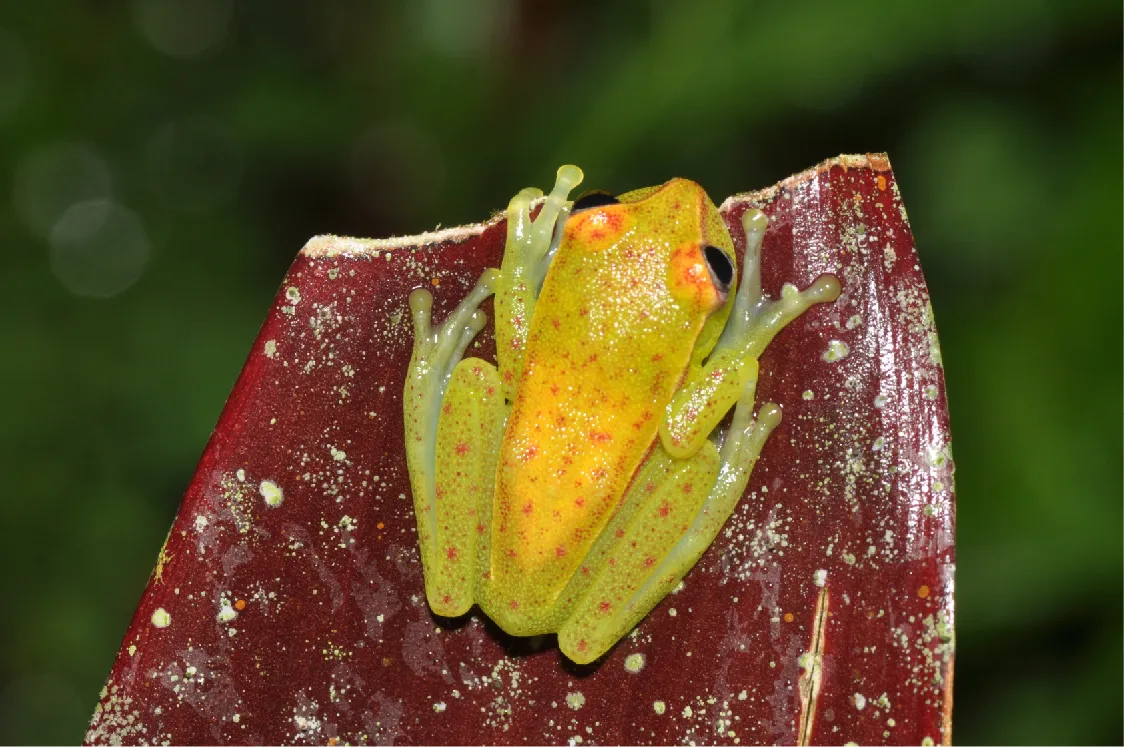
Fluorescence in living things isn't particularly unusual, we know of many examples of animals, plants, insects and arthropods that are fluorescent (the article points out: Fish, Corals, Flowers, Spiders etc!). However, fluorescence in land a land animal is a pretty rare thing. Perhaps you recall last year when a tree frog was discovered to be fluorescent? If so you will remember that the news media went bonkers with the story, and really hyped up how neat it was [8], [9]. Rightfully so, this was an interesting observation! What's maybe more interesting is how little we know about what these glowing properties are for! Researchers postulate that it is for 'sexy time' reasons, or for helping the animals identify whos male and whose female. [10]
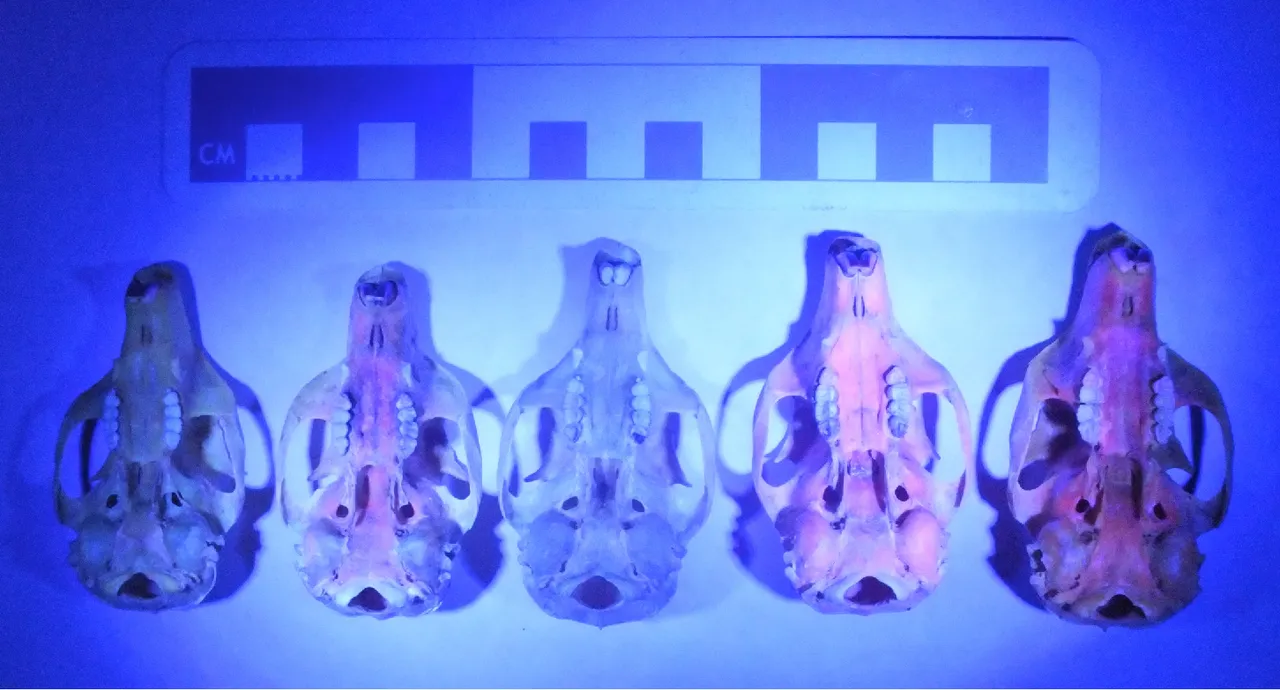
Well today we are discussing some interesting observations that were recently made about our favorite color changing animals, chameleons. Unlike the frogs discussed above and other animals using specific cellular bodies to express fluorescent proteins/compounds, chameleons employ something that is naturally fluorescent. Bones. [12]
Bones? Tell Me More!
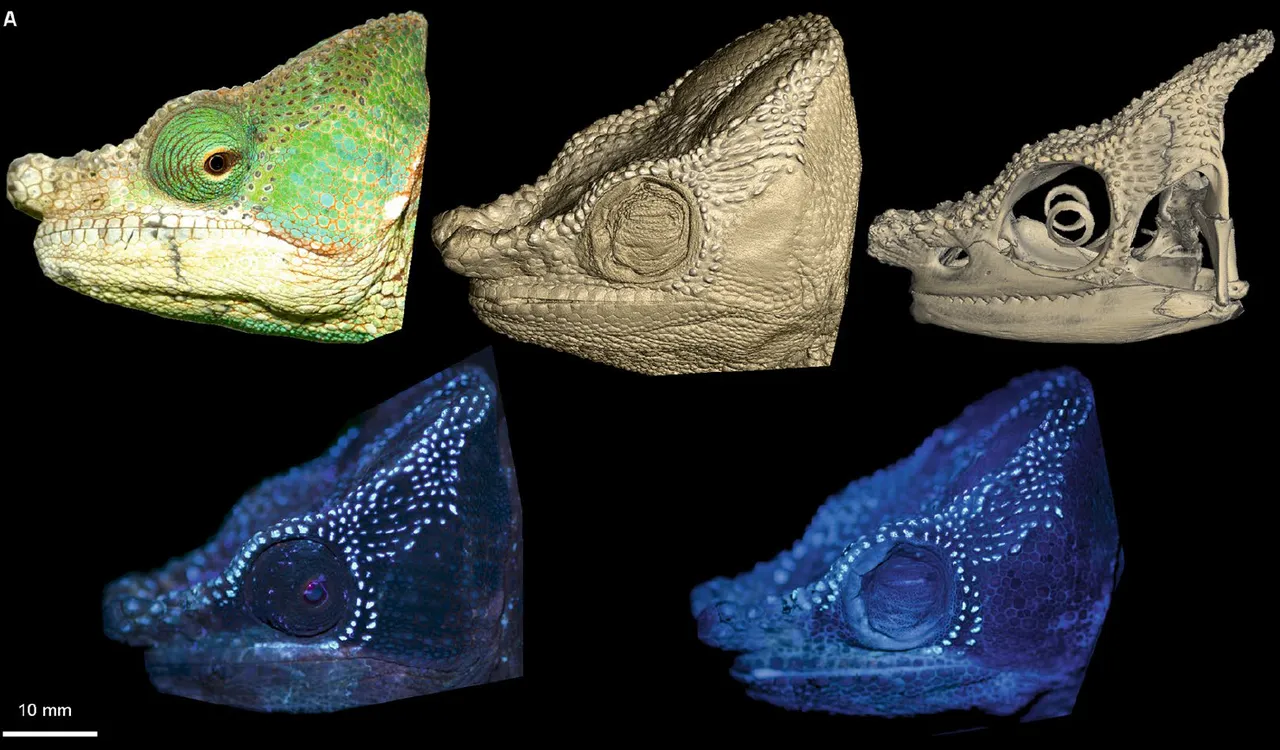
Wow, great enthusiasm! Okay, so chameleons have these 'bony ridges' that start at the top of their heads and travel down their bodies from there. It has been postulated that these bone structures are (not surprisingly) also used for mating purposes (in biology... everything is related to attracting that made to 'bone'... get it?). However much like everything else thats just a hypothesis and we don't really know. Well the researchers here found that if UV light (353 nm) is shined on either live (on top and bottom left in the image to the left) or preserved (top and bottom right in the image to the left) chameleons, that the bone structures glow BLUE!
Now it wasn't all of the bones of the chameleon that glowed! It was just these little outgrowths (or turbercles) that were responsible for the glowing! Even more interestingly is that the skin layer on top of these little outgrowths of bone is very very thin, so thin that you can actually see through it! (this makes sense as we can SEE the glowing even on the living chameleon). What this indicates to scientists is that SEEING these bone growths must actually be important for something!
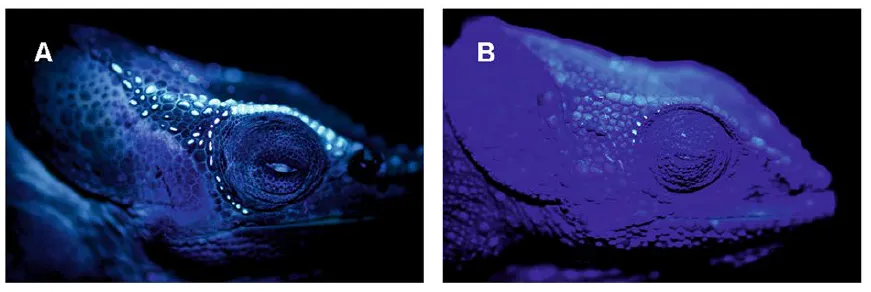
Further, the researchers found that the glowing bone growths had a sex dependence to them. Meaning that it was MALES that prominently had these while FEMALES did not! To the right are looking at a male Calumma crypticum (on the left side of the image) and a female Calumma crypticum (on the right side of the image). You can pretty clearly see that the male chameleon has LOT more fluorescent bone structures on its head then does the female! The researchers point out that these bones are concentrated around the eyes of the chameleon especially, and that this is an important signaling spot for the animal. (I will refrain from making another bone-ing joke here...or not!).
Are These Bone Structures Found In All Chameleons?
The main focus of this research article was Calumma crypticum and at first the authors looked into other calumma and found that these bones are present in almost all of them. So they expanded their search into other genera of chameleons and found that in 8 out of 12 currently known genera they also exist (to varying degrees, not all species of chameleons in these genera have the bones). Still, the coverage is pretty extensive.
What was interesting is that the bone coverage of the chameleon is most common among those who live in particularly shaded forest areas where light exposure is lowest. This supports the hypothesis that this fluorescence is actually a communication mechanism, as despite low levels of visible light (forest leaf cover blocks light!), UV light is still able to penetrate the forest (and remember these bones glow from UV light!) As the chameleons eyes are quite good at picking up light in the wavelengths that the bones emit, this could serve as an effective way for chameleons to find their mates while not being detected by predators.
The authors end with yet another interesting hypothesis in that perhaps many other animals with visible bone structures at the skin surface also use a fluorescence communication mechanism that was never before considered.
Future study on chameleons and other bone decorated animals will be necessary, for now at least we will have to settle with knowing that under the right light conditions. Chameleons don't just change colors, they also glow.
Sources
Image Sources
Text Sources
- https://www.nature.com/articles/s41598-017-19070-7
- https://en.wikipedia.org/wiki/Chameleon
- http://journals.plos.org/plosone/article?id=10.1371/journal.pone.0083259
- https://www.nature.com/articles/35048564
- https://www.nature.com/articles/437334a
- http://science.sciencemag.org/content/315/5811/481.long
- https://steemit.com/science/@justtryme90/scientists-have-identified-a-naturally-fluorescent-frog
- https://www.npr.org/sections/thetwo-way/2017/03/16/520311715/groovy-scientists-say-theyve-found-the-first-fluorescent-frog
- https://www.huffingtonpost.com/entry/first-fluorescent-frog_us_58d0a42fe4b0ec9d29dec973
- https://www.frontiersin.org/articles/10.3389/fevo.2016.00126/full
- https://wonderopolis.org/wonder/why-do-chameleons-change-their-colors
- https://www.nature.com/articles/2061328a0
- https://en.wikipedia.org/wiki/Tubercle
SteemSTEM

If you haven't heard about the SteemSTEM project yet (WHAT do you live under a rock!? Just kidding), and are reading this post then I highly recommend you take a look into it! The SteemSTEM team has been working for over one year now to promote promote well written/informative Science Technology Engineering and Mathematics postings on Steemit. The project (@steemstem) seeks to build a community of science and technology lovers on steemit and ade in nurturing the growth of blogs that will make steemit a go-to source for science/tech information, news, and just generally fascinating content.
To learn more about the project please join us on steemit.chat (https://steemit.chat/channel/steemSTEM) or on discord, we are always looking for people who want to help in our quest to increase the quality of STEM (and health) posts on our rapidly growing platform!
Finally thanks to @rocking-dave for the great gif set that so many members of the community use in their posts. They look fantastic.